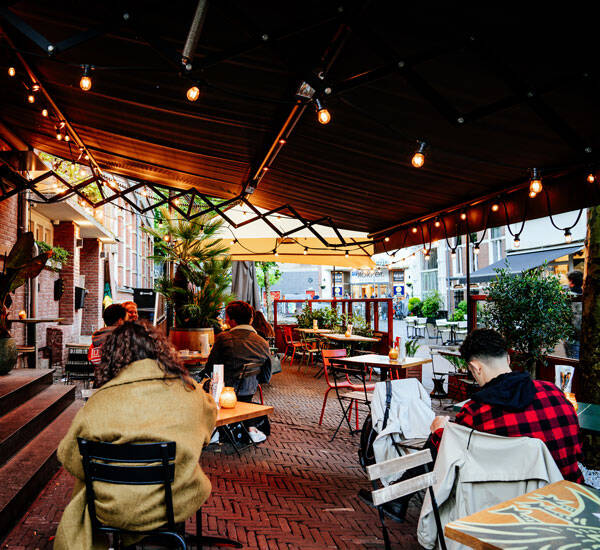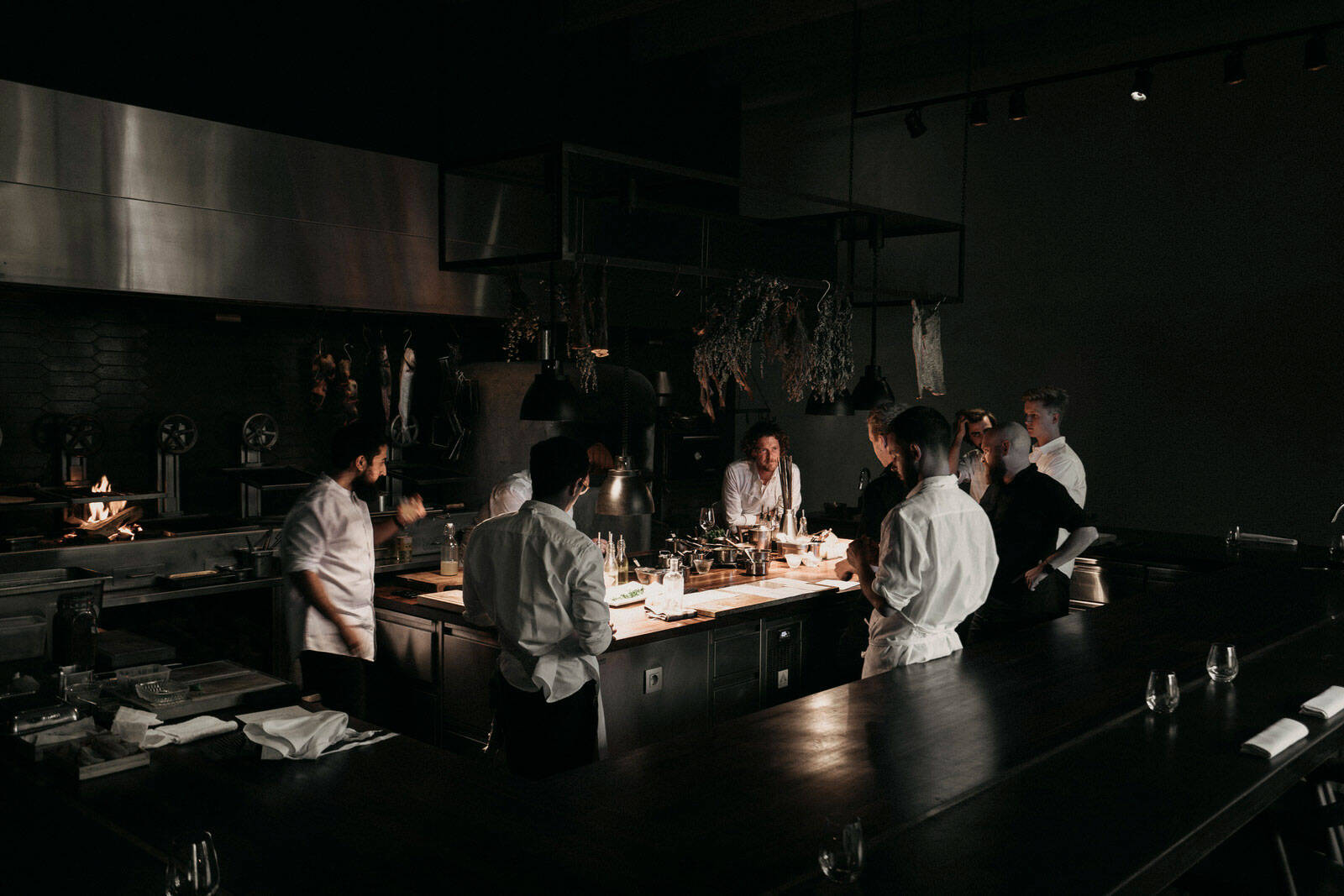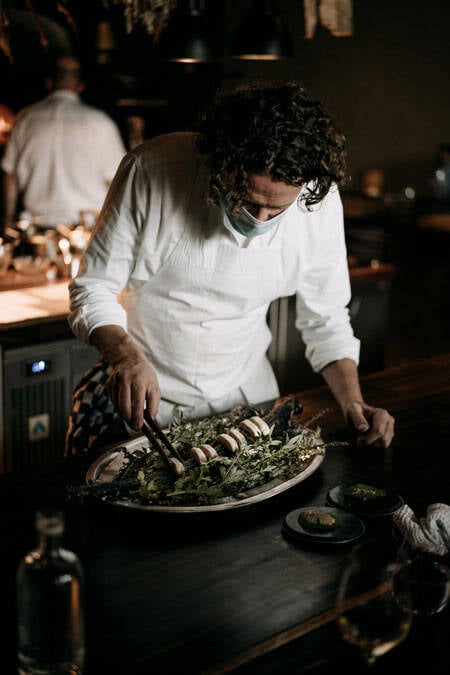Sources and further reading:
- IMF (PDF)
- National Restaurant Association State of the Industry 2021
- COVID-19 and restaurant demand: Early effects of the pandemic and stay-at-home orders

A snapshot worldwide
Of quickservice operators have expanded their outdoor options
23%
56%
Of casual dining operators have expanded their outdoor options
62%
Of fine dining operators have expanded their outdoor options
© Nina Slagmolen, Escobar

Are more likely to order off-premise
68%
Of adults say takeout and delivery are essential to the way they live
53%
60%
Consider restaurants an essential part of their lifestyle. This number is higher among both millennials and generation Z
67%
Of adults say they aren’t visiting restaurants as often as they’d like

Outdoor dining offers hope for independents, too.
Projected sales for 2021 see a 10.2% increase, still 15% below pre-pandemic levels. However: consumers are ready to return and off-premise has been a point of light in dark times.
Independent restaurants with strong community ties are well positioned for the takeout and delivery market. 64% of guests prefer to order directly from the restaurant, and 72% prefer the restaurant to have a physical location. Despite their meteoric rise, Ghost Kitchens have yet to prove themselves in the minds of diners.
The long road to recovery
© Chantal Arnts, Chambre Séparée

48%
Of restaurateurs that were forced to close their doors say they are likely to stay in the industry
Of people have seen a restaurant in their community be forced to close permanently
60%
The majority of closed restaurants had been operating for 16 years or more, with 16% having existed for over 30 years.
Family dining, fine dining, and casual dining segments took the brunt of the impact in food with a 30% drop in sales (2020 compared to 2019). Limited service restaurants, which includes most big chains, saw a relatively mild 6% drop. Bars and other establishments reliant on alcohol sales plummeted 65%.
Independents suffer greatly
+100,000
Over one hundred thousand restaurants were closed long term or permanently
$240 billion
Compared to the National Restaurant Associations projected numbers for 2020, restaurants fell $240 billion dollars short
-19.2%
Restaurants sales in the United States were down 19.2% in 2020
At the height of the pandemic, more than 8 million restaurant workers were laid off or furloughed in the United States alone. The end of 2020 saw 2.5 million fewer industry jobs than the beginning of the year.
2020 was the most challenging year in history for restaurants, especially independents.
The Impact of COVID-19 in 2020
© Nina Slagmolen, I-Dock

© Nina Slagmolen, Escobar

Jelle Steenbergen Xiao Er Kong
COVID-19 and restaurants
The most challenging year in history
infographic
2 min
the most challenging year in history
© Chantal Arnts, Chambre Séparée

© Chantal Arnts, Chambre Séparée

Sources and further reading:
- IMF (PDF)
- National Restaurant Association State of the Industry 2021
- COVID-19 and restaurant demand: Early effects of the pandemic and stay-at-home orders

A snapshot worldwide
Of quickservice operators have expanded their outdoor options
23%
56%
Of casual dining operators have expanded their outdoor options
62%
Of fine dining operators have expanded their outdoor options
© Nina Slagmolen, Escobar

Are more likely to order off-premise
68%
Of adults say takeout and delivery are essential to the way they live
53%
60%
Consider restaurants an essential part of their lifestyle. This number is higher among both millennials and generation Z
67%
Of adults say they aren’t visiting restaurants as often as they’d like
Independent restaurants with strong community ties are well positioned for the takeout and delivery market. 64% of guests prefer to order directly from the restaurant, and 72% prefer the restaurant to have a physical location. Despite their meteoric rise, Ghost Kitchens have yet to prove themselves in the minds of diners.

Outdoor dining offers hope for independents, too.
Projected sales for 2021 see a 10.2% increase, still 15% below pre-pandemic levels. However: consumers are ready to return and off-premise has been a point of light in dark times.
The long road to recovery
© Chantal Arnts, Chambre Séparée

48%
Of restaurateurs that were forced to close their doors say they are likely to stay in the industry
Of people have seen a restaurant in their community be forced to close permanently
60%
The majority of closed restaurants had been operating for 16 years or more, with 16% having existed for over 30 years.
Family dining, fine dining, and casual dining segments took the brunt of the impact in food with a 30% drop in sales (2020 compared to 2019). Limited service restaurants, which includes most big chains, saw a relatively mild 6% drop. Bars and other establishments reliant on alcohol sales plummeted 65%.
Independents suffer greatly
+100,000
Over one hundred thousand restaurants were closed long term or permanently
$240 billion
Compared to the National Restaurant Associations projected numbers for 2020, restaurants fell $240 billion dollars short
-19.2%
Restaurants sales in the United States were down 19.2% in 2020
At the height of the pandemic, more than 8 million restaurant workers were laid off or furloughed in the United States alone. The end of 2020 saw 2.5 million fewer industry jobs than the beginning of the year.
2020 was the most challenging year in history for restaurants, especially independents.
The Impact of COVID-19 in 2020
Jelle Steenbergen Xiao Er Kong
COVID-19 and restaurants
The most challenging year in history
© Chantal Arnts, Chambre Séparée
© Chantal Arnts, Chambre Séparée

© Nina Slagmolen, I-Dock

2 min










